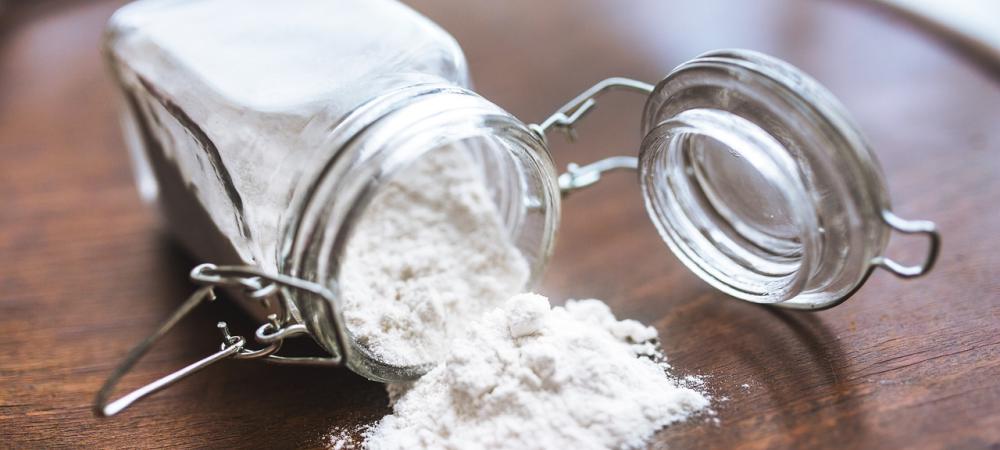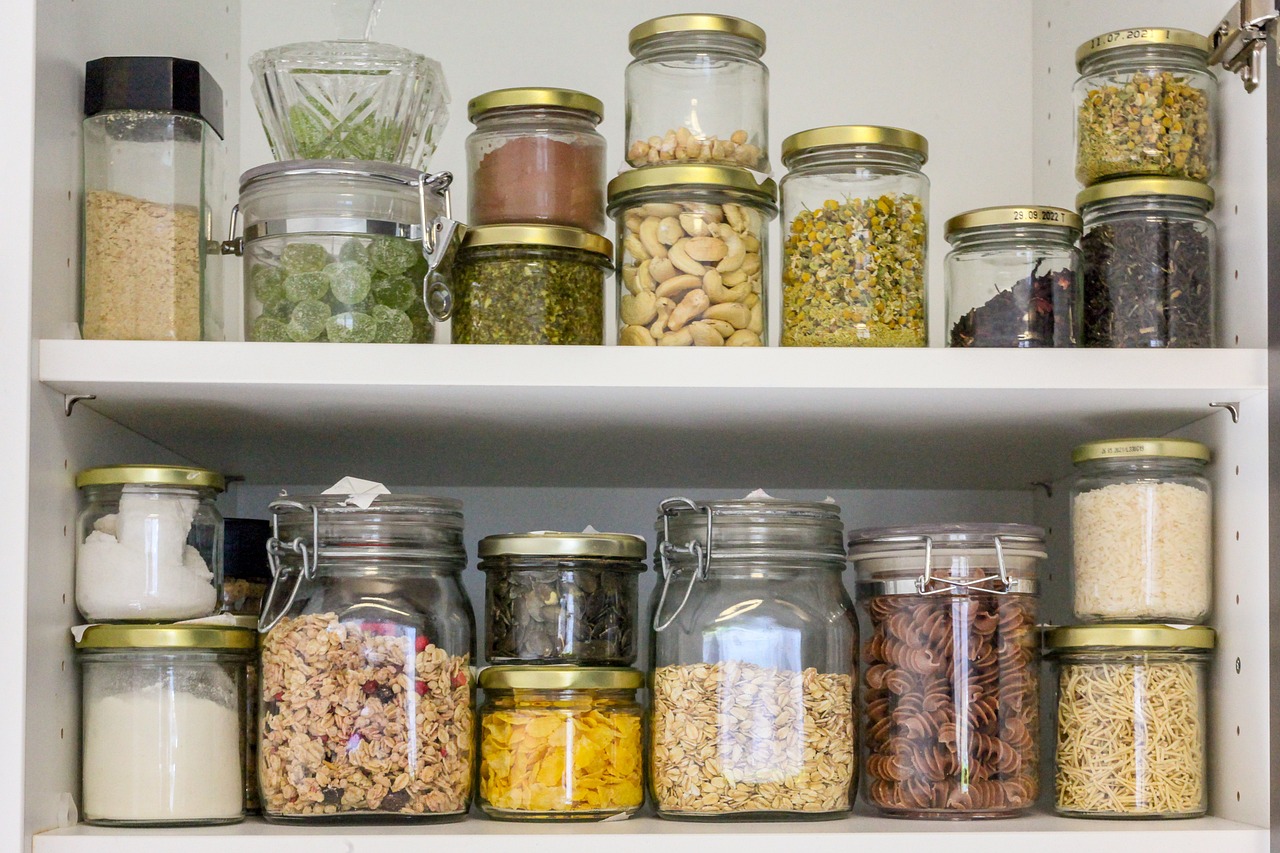How To Get Rid of Pantry Bugs: Identification and Prevention

Your pantry, the place where you store your precious food items, can sometimes become a battleground for tiny invaders known as pantry bugs. These pests can infiltrate your cabinets and shelves, causing frustration and potentially contaminating your stored goods. In this blog, we'll delve into the world of common pantry bugs, learn about their habits, and discover effective ways to prevent and eliminate these uninvited guests.
The Most Common Types of Pantry Bugs
Several types of pantry bugs can find their way into your kitchen:
Indian Meal Moths (Plodia interpunctella)
These moths are one of the most widespread and bothersome pantry pests. The adult moths are often seen fluttering around lights and can lay eggs in stored grains, flour, cereal products, and dried fruits. The larvae, which are the actual pests, create webbing and can contaminate the food.
Adult moths have a wingspan of about 3/8 to 5/8 inches. They have reddish-brown forewings and grayish wings with a distinctive coppery hue near the tips. Larvae are small, off-white caterpillars with brown heads.
Weevils
Weevils are small beetles—the two most common types are:
- Flour Weevils (Tribolium confusum): These weevils infest flour, cereal, pasta, and other stored grains.
- Rice Weevils (Sitophilus oryzae): As the name suggests, they target rice, but they can also infest other grains and pasta.
Flour weevils and rice weevils are typically reddish-brown or dark brown in color, with tiny scales covering their bodies. Other types of weevils include grain weevils, also known as granary weevils, and wheat weevils.
Saw-Toothed Grain Beetles (Oryzaephilus surinamensis)
These beetles are small, flat, and reddish-brown in color. They have saw-like projections along their thorax that give them their name. They can infest flour, cereal, pasta, and other dry goods.
Merchant Grain Beetles (Oryzaephilus mercator)
Similar in appearance to sawtoothed grain beetles, merchant grain beetles are small, flat, and reddish-brown and often infest cereals, grains, and processed foods.
Cigarette Beetles
Adult cigarette beetles are oval and about 1/10 inch long. They are brown in color and have a humped appearance. These beetles are known for infesting tobacco products, but they can also infest spices, dried herbs, and even some dried fruits.
Drugstore Beetles (Stegobium paniceum)
Similar to cigarette beetles, these beetles are oval-shaped and about 1/10 inch long. They are brown with a mottled appearance and infest a wide range of stored foods, spices, and even pet food.
Confused Flour Beetles (Tribolium confusum)
These beetles are small and reddish-brown, with clubbed antennae and are another common pantry pest that infests flour, cereal, and other stored grains.
Carpet Beetles (Anthrenus scrophulariae)
While not exclusive to pantries, these beetles can infest dry goods like cereals, grains, and even pet food. They are about 1/8 to 1/4 inch in length and have an oval-shaped body. Their coloration can vary, but they often have mottled patterns with a mix of white, black, brown, and yellow scales on their backs.
How to Get Rid of Pantry Bugs
To get rid of pantry pests, we recommend following these steps:
- Remove Infested Items: Discard any infested food items in sealed plastic bags and dispose of them properly.
- Empty and Clean: Empty your pantry shelves and cabinets, then thoroughly clean them using soap and water. Vacuum corners and cracks to remove any debris.
- Inspect Other Items: Check all remaining food packages for signs of infestation. If you suspect an item is infested, placing it in the freezer for a few days can kill off any larvae or eggs.
- Use Airtight Containers: Transfer all dry goods to airtight, plastic containers to prevent re-infestation. Sealable metal containers can also be used.
- Soapy Water: Spray soapy water on affected areas in your pantry to suffocate and kill pantry bugs on contact. Wipe and clean the area afterward.
- Pheromone Traps: If you can identify the pantry bug, set up pheromone traps specific to the type of pest you're dealing with to capture adult bugs.
- Insecticidal Dust: If you are dealing with a larger infestation, you can also use insecticide dust to get rid of pantry bugs, though we recommend carefully following safety guidelines and manufacturer instructions.
- Natural Repellents: Place items like bay leaves, cinnamon sticks, or cloves in your pantry to repel pests.
- Proper Storage: Keep your pantry organized and rotate stock using the "first in, first out" rule.
- Maintain Hygiene: Regularly clean your pantry to eliminate crumbs and food particles that attract pests.
If the infestation persists, consider seeking assistance from a professional Jupiter pest control company like Blue Door Pest Control. Our team of experienced exterminators is here to help you reclaim your home.
Why Do I Have Pantry Bugs?
The presence of pantry bugs in your kitchen can be attributed to a combination of factors. Understanding these factors can help you identify the root causes of the infestation and take appropriate steps to address them. Here are some reasons why you might have pantry bugs:
Contaminated Store-Bought Items
Pantry bugs can sometimes hitch a ride from the grocery store into your home through infested store-bought food items. Even sealed packaging might not be completely foolproof, as pantry bugs can get in as early as the processing plant.
Improper Food Storage
If you're not using airtight containers to store your dry goods, you're providing easy access for pantry bugs to infest your food. We recommend using containers made of hard plastic or metal to ensure the pests can't chew through the packaging. If you are concerned about a food item getting infested, we encourage you to store it in your fridge.
Lack of Rotation
Keeping food items for extended periods without using them allows pests to multiply within the packages. Try to rotate the items in your pantry regularly and to throughout anything that you have had for a while or that might already be expired.
Poor Hygiene
A lack of regular cleaning and sanitization in your pantry area can encourage pest infestations, as crumbs, food residue, and spills in your pantry create an attractive environment for pantry bugs.
Warmth, Humidity, and Moisture
Excessive humidity or moisture in your pantry can attract certain types of bugs that thrive in damp conditions. The warmth of your kitchen also provides an ideal environment for many pests to breed and multiply.
Transfers from Infested Item
If you've used infested utensils or containers to handle food, you might unknowingly spread pests.
Unsealed Cracks and Openings
Pantry bugs can enter your home from outside through gaps around doors, windows, and walls, finding their way into your kitchen.
FAQ About Pantry Pests
Here are some of the most common questions our exterminators get about pests in the pantry.
What Is Considered A Pantry Pest?
A pantry pest is a small insect that infests and damages stored food items in your pantry or kitchen. Common examples include Indian meal moths, weevils, beetles, and other bugs that target dry goods like grains, flours, cereals, and spices.
Are Pantry Bugs Dangerous?
Pantry bugs are generally not dangerous to humans in terms of health risks, but they can contaminate food and cause financial losses by ruining stored goods.
What Food Products Do Pantry Bugs Like?
Pantry bugs are attracted to a variety of dry food sources, including grain products (rice, oats), flours, cereals, pasta, dried beans, nuts, seeds, dried fruits, spices, and baking mixes.
What Smells Do Pantry Pests Hate?
Pantry pests are repelled by certain strong scents. Some smells they dislike include:
- Bay Leaves
- Cinnamon
- Cloves
- Peppermint
- Eucalyptus
- Lavender
Placing items like bay leaves, cloves, or cinnamon sticks in your pantry can help deter pantry pests from infesting your stored food items.
Can Pantry Bugs Get Into Ziploc Bags?
Yes, pantry bugs can potentially get into Ziploc bags if the bags are not completely sealed or if there are any gaps or openings. It's recommended to use hard-plastic or metal, airtight containers for extra protection against pantry pests.
How Do I Know If I Have Pantry Pests?
Detecting pantry pests early is crucial to prevent a minor issue from turning into a major infestation. Here are some signs to look out for if you suspect you might have pantry pests:
- Webbing or Silk Threads: Indian meal moth larvae create silken threads and webbing around the infested food items. If you notice silky, cobweb-like material in your stored foods, it could be a sign of an infestation.
- Tiny Holes: Weevils and beetles often leave small, round holes in grains, flours, and other dry goods. If you notice small holes in your food packaging or unexplained food spills, inspect the contents closely.
- Peculiar Odor: Some pantry pests can give off a foul or musty odor. If you notice an unusual smell coming from your pantry or stored foods, it might be worth investigating further.
- Piles of Fine Dust: Some pantry pests, like flour beetles, create a fine, powdery residue as they feed.
- Crawling Insects: The presence of crawling insects in your pantry or around your stored foods is a clear indication of an infestation. Keep an eye out for both larvae and adult bugs on or near your stored food items. These can vary in size, color, and shape depending on the type of pest.
- Moths Flying Around Lights: Indian meal moths are known for their fluttering behavior around lights. If you see small moths near your pantry or kitchen lights, it could be a sign of a pantry pest infestation.

